To tailor a vintage peasant blouse, start by selecting lightweight fabrics like linen or cotton for breathability. Measure accurately and cut your pattern, ensuring all pieces lay flat. Use pins for precision when aligning sleeves and bodice. When sewing, maintain a quarter-inch seam allowance, and finish raw edges with a zig-zag stitch. Don't forget to hem the bottom and neckline for a polished look. For a unique flair, add decorative buttons or contrasting colors. Adjust for fit by taking bust and waist measurements, and consider adding darts for a tailored silhouette. There's so much more you can explore!
Fabric Selection and Preparation
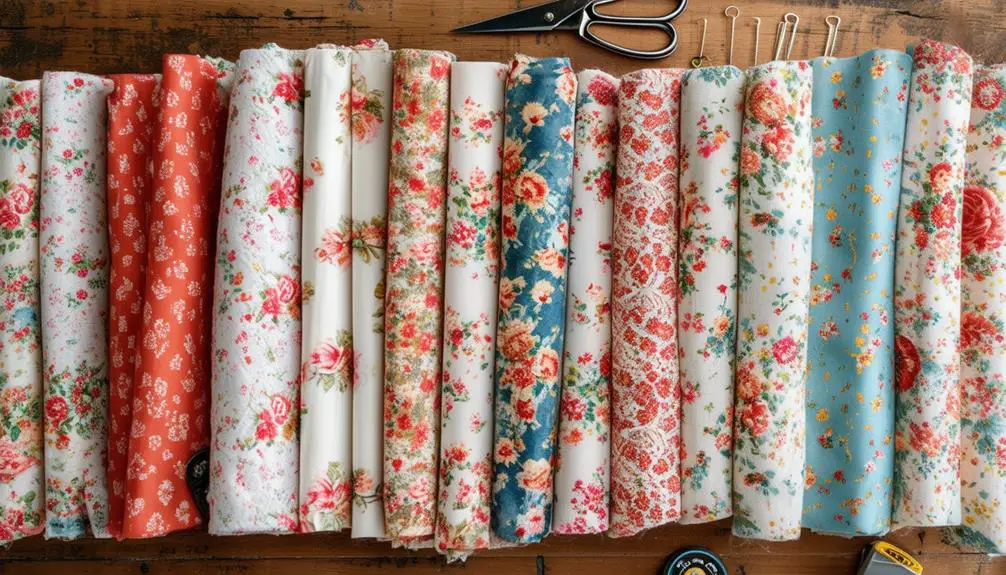
When you're ready to tailor a vintage peasant blouse, choosing the right fabric is key to achieving that effortless, comfortable look. Opt for lightweight fabrics like linen, cotton, or gauze to guarantee the blouse drapes beautifully while allowing for breathability. Avoid stretchy materials, as they can distort the blouse pattern and compromise its intended structure.
Understanding the historical context of the fabric and design can enhance your appreciation of the piece, especially if it features unique elements characteristic of vintage clothing.
For your fabric selection, aim for about 1.5 yards for a comfortable fit, though 1.25 yards may suffice if you're okay with a bit less flexibility. As you shop, pay close attention to aligning patterns, especially if you're working with stripes. Consistent alignment will enhance the overall appearance of your blouse.
It's also wise to think about purchasing extra fabric. This not only accommodates alignment but also provides a safety net for any cutting errors.
When you're ready to cut your fabric, tracing the blouse pattern onto additional fabric allows for consistency and facilitates size adjustments for future projects. Plus, it preserves your original pattern piece, reducing wear and tear as you create multiple blouses.
With these tips, you'll set the foundation for a stunning vintage peasant blouse.
Cutting the Pattern
Before diving into cutting the pattern, it's essential to prepare your fabric and confirm all tools are ready for a smooth process. Start by folding your main fabric pieces lengthwise, making sure they're laid flat. Use a ruler to measure and mark specific cutting points; this step guarantees accurate shaping for your peasant blouse. When you cut, create a slight curve from the marked points to the neck area, aiming for a neckline shape that's both stylish and symmetrical.
Next, take the first cut piece and use it as a template for the second main piece. This method helps you maintain uniformity in size and shape.
For the sleeve pieces, fold them in half before cutting, aligning the raw edges. This technique keeps your cutting easy and consistent throughout the blouse.
After you've completed cutting, double-check all pieces for alignment, especially if you're working with patterned fabrics. This final check prevents mismatches during assembly and ensures that your vintage peasant blouse turns out beautifully.
With everything neatly cut, you're one step closer to creating a stunning wardrobe addition.
Sewing Techniques
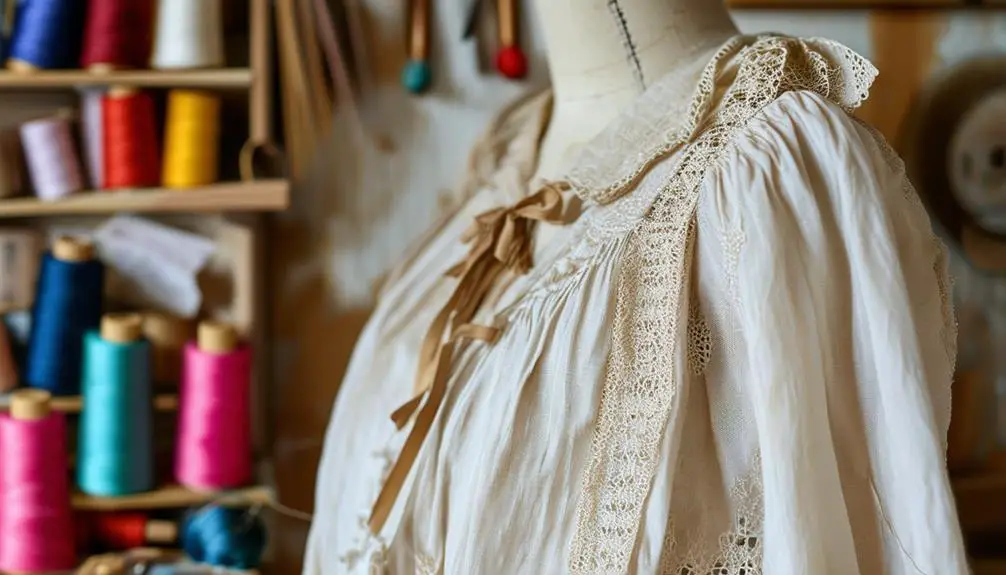
Start by laying the main piece of your vintage peasant blouse flat on your sewing surface, ensuring it's wrinkle-free. Carefully align the sleeves at the neck and armholes, then attach them to guarantee a proper fit. When stitching, use a quarter-inch seam allowance and remember to backstitch at the ends; this reinforces the seams for durability.
Vintage clothing, such as those from brands like Betty Barclay, often showcases unique design elements from the mid-20th century, which can inspire your tailoring process.
Next, attach the second main piece to the sleeves in a circular shape. Finish the raw edges with a zig-zag stitch or serger to prevent fraying. As you sew, make sure the arm and armpit seams are aligned; using pins can help maintain accuracy and make the process easier.
For the flutter sleeves, fold over the ends twice and sew, leaving an opening to insert elastic. To get the elastic through, you can use a safety pin, ensuring a snug fit.
These sewing techniques not only make the peasant blouse easy to make but also enhance its overall style. With careful attention to these details, you'll create a beautifully tailored vintage piece that you'll love to wear!
Final Touches and Embellishments
Adding the final touches and embellishments to your vintage peasant blouse can truly elevate its charm and personality. Start by finishing the sleeves: fold the ends over twice and sew, leaving an opening for elastic insertion. This creates a comfortable fit. After inserting the elastic using a safety pin, secure the ends with back-and-forth stitching for durability.
Next, hem the bottom and neckline by folding the fabric over twice and topstitching, again leaving an opening for elastic insertion. This enhances both fit and comfort.
For added flair, consider using decorative buttons down the center of the blouse. Not only do they embellish your peasant tops, but they also serve functional purposes if desired.
Incorporating contrasting colors for embellishments or waistbands can provide a personalized touch, bringing visual interest to the overall design. Here's a quick overview of embellishment options:
| Embellishment Type | Description | Suggested Colors |
|---|---|---|
| Decorative Buttons | Adds flair and functionality | Bold colors, neutrals |
| Elastic Insertion | Enhances fit and comfort | Matching or contrast |
| Contrasting Waistbands | Personalizes the look | Vibrant or muted |
Embrace these final touches to make your vintage peasant blouse uniquely yours!
Sizing and Adaptation
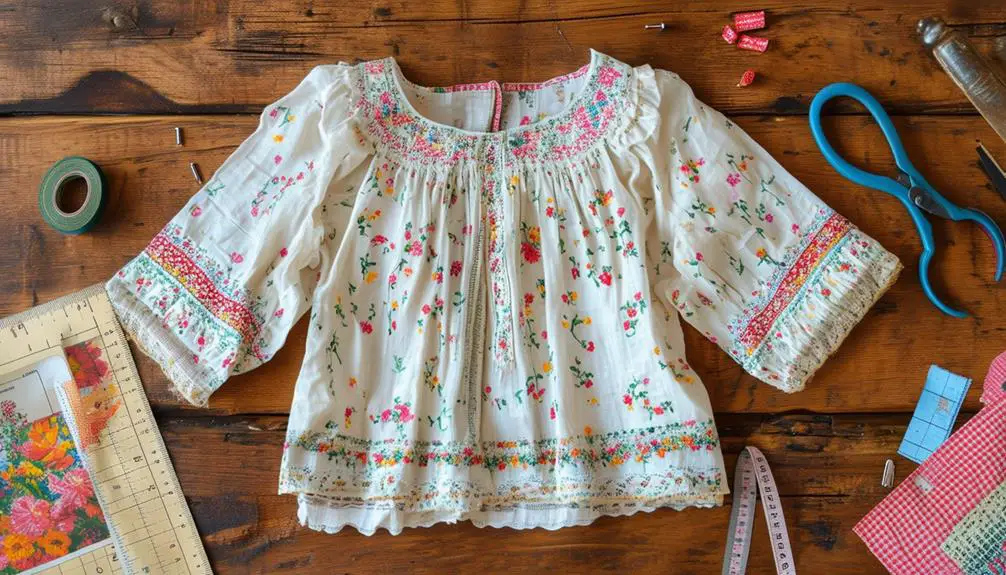
Getting the right fit for your vintage peasant blouse is vital to achieving a comfortable and stylish look. Start by taking accurate bust and waist measurements, as these dimensions directly influence the blouse's overall fit. Measure yourself carefully, ensuring the tape is snug but not tight.
If you're adapting patterns for pregnant individuals, remember to factor in extra ease in the bust and waist areas to accommodate changing body shapes.
When it comes to children's sizes, it's important to apply different measurements and considerations compared to adults. Kids need room for movement, so be sure to adjust the pattern accordingly. Clear instructions and specific measurements are your best friends in this process, allowing you to achieve a personalized fit that doesn't sacrifice the vintage aesthetic.
Don't hesitate to experiment with sizing adaptations, whether it's adding darts for a more tailored look or adjusting the length for comfort. Every alteration you make brings you closer to that perfect fit.
With patience and attention to detail, your vintage peasant blouse won't only look fabulous but will also feel just right. Happy sewing!
Community Engagement and Resources
Once you've tailored your vintage peasant blouse to perfection, connecting with fellow sewing enthusiasts can elevate your crafting experience. Engaging with a community not only enhances your skills but also inspires creativity.
Here are three ways to immerse yourself in community engagement and tap into valuable resources:
- Join Online Forums: Platforms like Facebook and Reddit host groups where you can share your peasant top projects. These spaces are filled with easy-to-follow tutorials and FAQs that simplify your sewing journey.
- Participate in Challenges: Many communities encourage members to post photos of their finished projects using designated hashtags. This fosters interaction and allows you to celebrate your progress alongside others.
- Explore Pattern Stash: Check out shared resources where you can access both historical patterns and modern adaptations. These insights will help you adapt your peasant blouse, ensuring you continue developing your skills.
Frequently Asked Questions
How to Alter a Blouse to Make It Smaller?
To alter a blouse smaller, start by measuring your bust and waist. Unpick seams, trim excess fabric, and resew. Consider adding darts for a tailored fit, ensuring the blouse flatters your shape beautifully.
What Year Were Peasant Blouses Popular?
Peasant blouses surged in popularity during the late 1960s and 1970s, reflecting the bohemian fashion movement. They reappeared in the 1980s, embraced for their romantic style, and remained a staple into the 1990s grunge era.
What Do You Wear Under a Peasant Blouse?
When you wear a peasant blouse, opt for a fitted camisole or tank top underneath for comfort and style. For cooler days, layer with a lightweight long-sleeve tee to keep warm while looking effortlessly chic.
What Is the Best Fabric for a Peasant Blouse?
When choosing fabric for your peasant blouse, opt for lightweight materials like cotton voile or rayon challis. These allow for breathability and drape beautifully, ensuring comfort and style without sacrificing the vintage aesthetic you love.
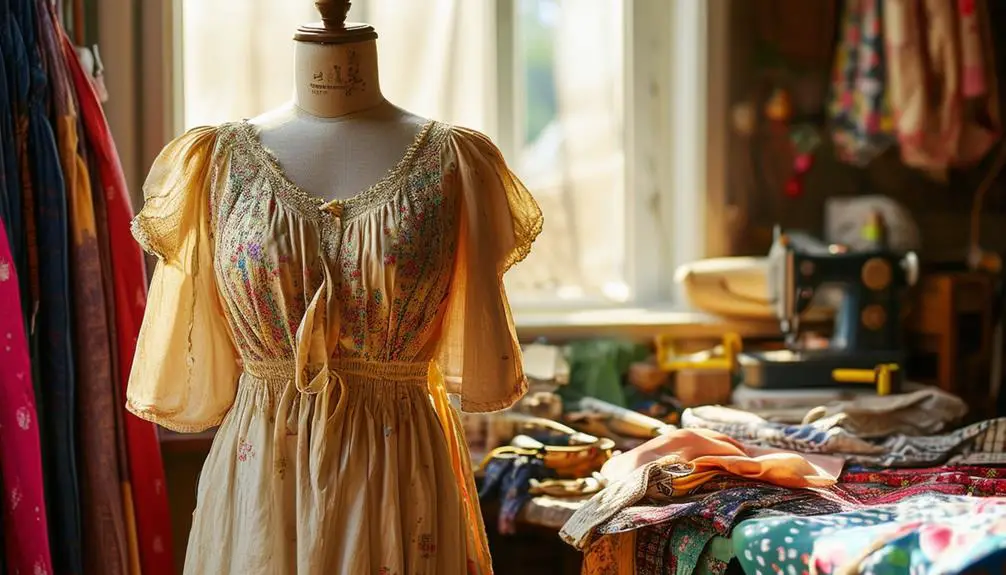

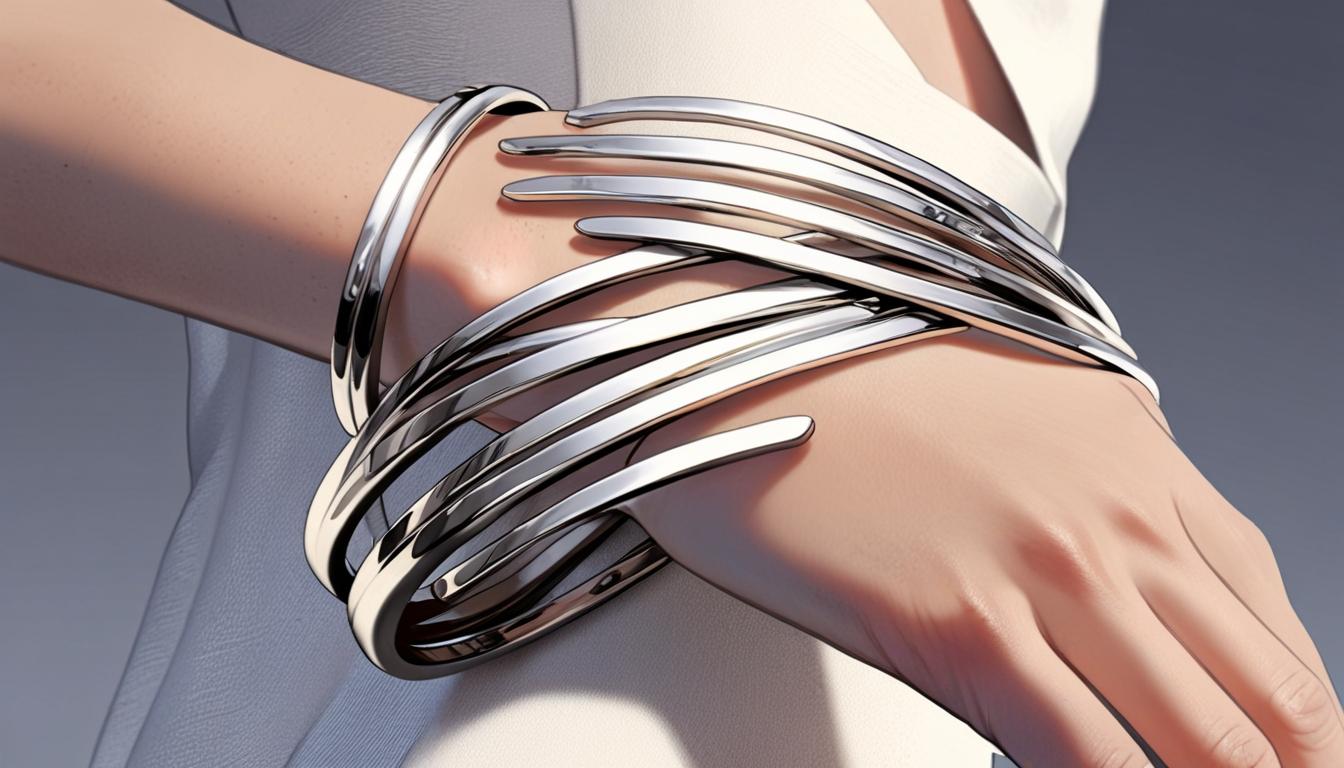

Your point of view caught my eye and was very interesting. Thanks. I have a question for you.